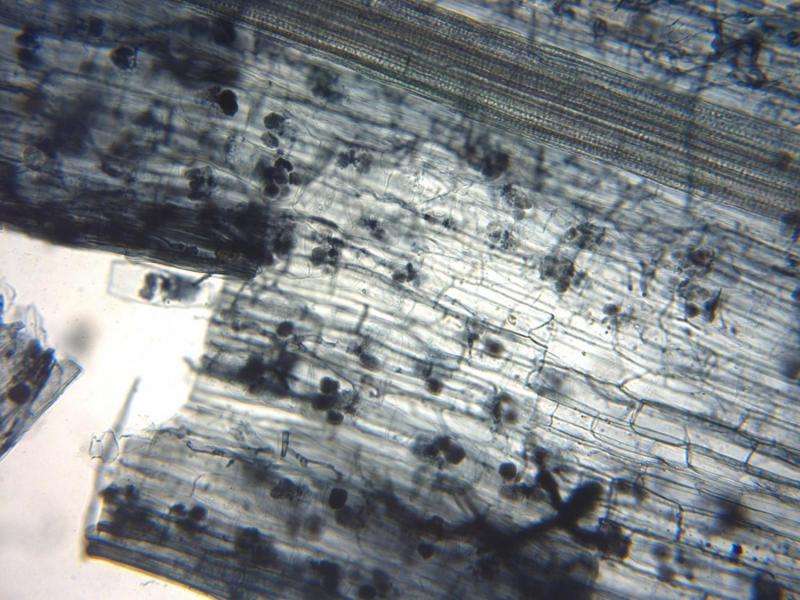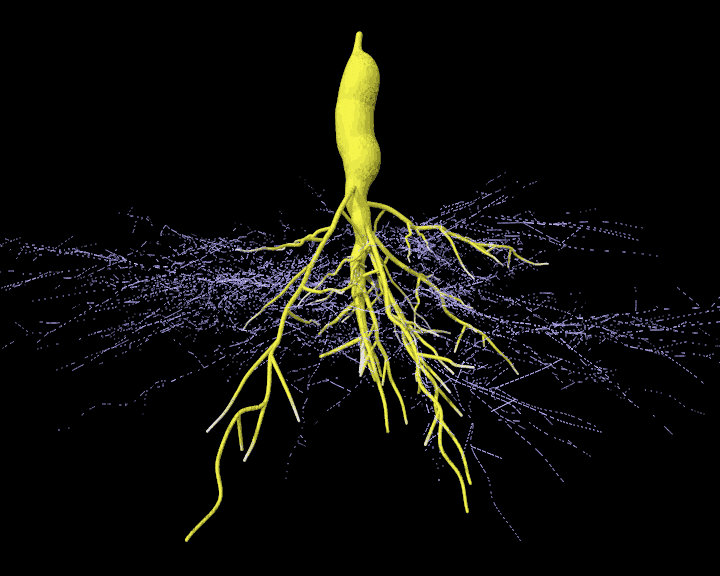August 28, 2015 report
Soil-dwelling fungi study shows extent of worldwide distribution

(Phys.org)—An international team of researchers has conducted a worldwide census of fungi that live in plant roots and in so doing has found them to be surprisingly broadly spread. In their paper published in the journal Science, the team describes their far-flung study, what they found and offer theories on a mystery that was also uncovered.
Arbuscular mycorrhizal fungus live among 80 percent of plant roots in a symbiotic relationship with their host—the plants get assistance in obtaining nutrients, help with getting water in dry conditions and a leg up in battling pathogens. The fungi, in return, get a steady source of carbon. But, as the researchers note, little is known about the global biography of such microorganisms. They suggest a better understanding of how the microorganisms do their job and how they disperse could have important implications for better understanding our global ecosystem, helping with restoration of damaged areas, and perhaps for increasing or at least sustaining agricultural yields. To learn more, the team embarked on a study that took them to six continents and involved pulling up plants to examine their roots in forests, shrub land, grasslands, successional sites and semi-desert spots, looking for samples of fungi.
In all, the team gathered 1,104 root samples, resulting in approximately 912 thousand fungus samples. Of those 836 were able to be sequenced revealing almost 250 DNA based "virtual taxa," that could be associated with 161 unique plant species. The team also conducted ribosomal RNA testing on the samples to learn more about their evolutionary history.

In studying their data, the researchers found that 93 percent of the fungi identified existed in the soil on more than one continent, and that 34 percent of them were found on all six continents. They also found that dispersal appeared to lessen the farther plants were from the equator and that at the local level, spatial distance and environmental conditions had an impact on the types of fungus appearing in plant roots.
RNA testing showed that the dispersal of the fungi appeared to have occurred after the continents drifted apart, which caused the researchers to wonder what sort of mechanism might have been responsible for carrying the microorganisms across such great distances. They suggest it could have been a variety of elements including both biotic and abiotic vectors.
More information: Global assessment of arbuscular mycorrhizal fungus diversity reveals very low endemism Science 28 August 2015: Vol. 349 no. 6251 pp. 970-973 DOI: 10.1126/science.aab1161
ABSTRACT
The global biogeography of microorganisms remains largely unknown, in contrast to the well-studied diversity patterns of macroorganisms. We used arbuscular mycorrhizal (AM) fungus DNA from 1014 plant-root samples collected worldwide to determine the global distribution of these plant symbionts. We found that AM fungal communities reflected local environmental conditions and the spatial distance between sites. However, despite AM fungi apparently possessing limited dispersal ability, we found 93% of taxa on multiple continents and 34% on all six continents surveyed. This contrasts with the high spatial turnover of other fungal taxa and with the endemism displayed by plants at the global scale. We suggest that the biogeography of AM fungi is driven by unexpectedly efficient dispersal, probably via both abiotic and biotic vectors, including humans.
Journal information: Science
© 2015 Phys.org





















